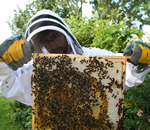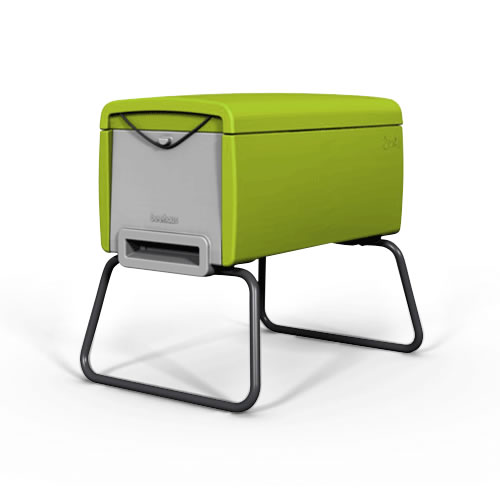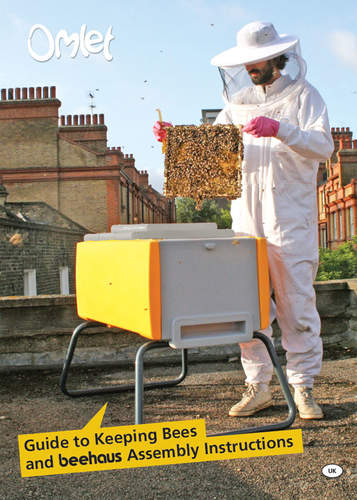Beekeeping is full of lots of new words... here is a useful summary.
Alarm pheromone - This alerts guard bees to potential threats to the colony. It is produced by worker bees.
Abdomen - The third section of a bee's body. It contains the stomach, honey stomach, intestines, sting and reproductive organs.
Acarapis woodi - The tracheal mites (different from the varoa mite). It lives in the tracheal (throat) and affects their breathing.
Aldehydes - An organic compound that contribute to the flavour and aroma of the honey. If you heat your honey, these will released reducing the flavour of the honey.
Amino acids - Wikipedia!
Anthers - Part of the stamen of a plant that contains pollen.
Bacillus larvae - The bacteria that cause American Foulbrood.
Bee bread - A mixture of pollen, yeast and honey, which when mixed and fermented creates delicious bee food. It is stored in the combs and fed to larvae.
Bee blower - Rather like an industrial cool hair dryer - a bee blower is used to blow bees off supers of honey.
Bee brush - A soft brush used to remove bees from a comb. Can be artificial or you could use a goose feather. If you choose a goose feather you can should choose a left- or right-handed feather to give a better brushing action. If you are harvesting, you should clear bees from the honey boxes using a bee escape rather than a brush.
Bee escape - A one way valve or exit which the bees can go through.
Bee space - Spaces smaller than this will be filled with propolis, larger than this will be filled with comb. The magic space is 6-8mm. This allows bees to pass without them building anything in the way. The discovery of this led to moveable frame hives.
Bee veil - Protective cloth of wire netting which stops a beekeeper's head and neck from being stung.
Bees wax - Wax that is secreted by special glands on the underside of the bees.
Blending - Like making a fine whiskey, mixing various varieties of honey can make something better than the sum of the parts, typically improving flavour and colour.
Breeding stock - The brood (i.e. eggs and larvae) from a good colony from which queens will be reared.
Brood - The area comb that has developing bees in its cells (i.e eggs and larvae).
Brood chamber - The part of the hive where the brood is based. Generally this is at the bottom of most modern hives.
Brood pheromone - A pheromone produced by the brood which tells the house bees to provide food, and for foragers to collect food.
Buckfast hybrid - A hybrid bee developed the famous monk - Brother Adam at Buckfast Abbey in England. The breed is regarded as calm, disease resistant and easy to manage.
Burr comb - Comb which has over grown the frame (ignoring the beespace) and linked to the hive body.
Capped brood - As the larvae cells develop they are capped with wax allowing them to spin cocoons and turn into pupae and eventually a bee.
Castes - A term which describes the three types of adult bees in a colony - drones, workers and the queen.
Cell - The hexagonal wax compartment in the comb. Amazingly these start round but by the tension in the comb change into hexagons. Bees use these cells to store honey, pollen or raise bees.
Chalkbrood - A fungal disease which affects bee larvae. If left untreated the larvae turn into hard, chalkymummies.
Chilled brood - If the brood become too cold it the immature bees (including larvae and eggs) can die. This is often cause by the hive being opened on a cold day.
Cluster - A mass of bees which huddle together. These are commonly seen in winter when the bees try to keep warm or in a swarm hanging from a tree.
Colony - A working group of bees which would include a queen, worker and drones.
Comb- A group of cells.
Crystallisation - This natural process occurs when the honey turns from liquid to solid creating granulate. You can make the honey liquid again but heating it slowly.
Drawn comb - The processing of building comb is called 'drawing'. Once the comb is completely built it is called "drawn comb".
Drifting - Sometimes bees loose their location and enter another hive. This might occur if you keep two hives next door to one another and it is a slightly windy day.
Drone - The male bee. The main role of the drone is to fertilise the queen, although this will only happen once in her life.
Extractor - A device which removes honey from the comb. This normally involves spinning the comb around.
Flight path - The area and direction that the bees take when leaving the hive. It is best to keep this area clear.
Foulbroad - A bacterial disease which affect bees, causing the brood to become brown and sticky. See the bee health section for more information on this disease.
Foundation - A thin sheet of wax that is the 'foundation' on which the bee build honey comb. Normally foundation is embossed with lots of hexagons - to encourage the bees to start building.
Frame - This is a rectangle of either plastic or wood in which comb will be built by the bee. It allows the beekeeper to move the comb around and was invented by Langstroth in 1852.
Frame wire - Wire used to reinforce frames to keep the foundation from moving or sagging in the frame.
Guard bee - Worker bees that guard the hive entrance from predators (including bee from other colonies or wasps).
Hive - A bee's home.
Hive tool - A multifunctional tool used by a beekeeper to open and clean their hives.
Honey flow - A term used to describe the collection of nectar (to make honey) by the bees (e.g. There weather is good and there is good honey flow at the moment).
Honey stomach - The stomach the bees use for carrying nectar, honey and water. It is in the abdomen.
Honeycomb - Comb which has been filled with lots of lovely honey.
Larvae - The stage when an egg undergoes metamorphosis into a bee.
Marked queen - A beekeeper typically will attempt to find the queen while tending to their bees. To help speed this process up many beekeepers mark their queen with a light colour dot.
Mead - A delicious wine made from honey. It is highly recommend that you are patient and leave your mead for at least 10 years to mature.
Nectar - A sugar-rich liquid secreted by plants. It is derived from the Latin word nectar which means "drink of the gods". The bees collect the nectar and turn it into honey.
Nucleus hive - Often called a Nuc, it is a small colony from which a full colony will group. Typically, this will be a group of bees living on 4-5 frames of brood.
Nurse Bee - An immature worker bee whose role in the hive is to feed the larvae.
Observation hive - A small hive normally made from glass which allows the colony to be observed.
Pheromone - A chemical signal which triggers a response in other bees. For example, if the colonies are attacked they release an alarm pheromone which alerts other bees to the danger. By using a smoker the beekeepers disrupts this pheromone signal and keeps the bees calm.
Piping - A sound made by a queen which normally preceding her emerging from her cell.
Pollen - A fine powder product by the male of the plant. It fertilises other plant and also provides and valuable source of protein for the bees.
Pollen trap - A device which is placed on the entrance of the hive and rubs the pollen from the legs of the incoming bees. The beekeeper can use this to collect pollen.
Porter bee escape - A type of bee escape based on two thin metal leaf springs.
Propolis - A resinous substance that bees collect from trees and plants. It is used by the bees to seal up cracks (reducing movement or vibration). Sometimes it is used to mummify something within the hive that they cannot throw out - such as a mouse.
Pupa - The final stage of a bee within its cell.
Queen - A mated female. Normally, there will be only one queen within a hive. Unlike a worker bee, she has fully developed ovaries and can lay eggs which can develop into other queens, workers or drones.
Queen cell - A largest peanut like cell which is design to rear a queen. It normally hangs vertically and is about 2 centimetres in length.
Queen excluder - A metal or plastic crate which is large enough for worker bees to climb through but through which the queen cannot fit. It is normally used to stop the queen from entering and laying eggs in the comb used for honey.
Queen right - A queen right colony is a colony that has a queen.
Requeen - To introduce a new queen to an existing queenless colony.
Robbing - The stealing of honey from a weak colony by other bees on insects.
Royal jelly - A food produced by the young worker bees. Royal jelly is fed to all of the larvae in the colony however, if a queen is being reared then she is fed purely royal jelly.
Sacbrood - A viral disease which affect the larvae.
Scout bee - A worker bee who looks out for sources of pollen, nectar, water or a new site for the colony.
Skep - A traditional simple beehive made from straw. It resembles and upturn waster basket.
Smoker - A box with bellows in which a wide variety of materials are burnt to product cool thick smoke. The smoke is used to hide the pheromone signals produced by the bees allowing the beekeeper to easily access the hive.
Supercedure - The process of replacing an existing queen with a new one. This is natural process - but can be induced artificially.
Surplus honey - If a colony is successfully it will produce more honey than it can use for its own stores. This surplus honey can then be collected for the beekeepers own use.
Swarm - A group of bees that have decided to move hive.
Winter cluster - A cluster of bees that huddle together to keep warm.
Worker bee - A female bee which cannot lay eggs. The vast majority of bees in the hive are workers. The worker bees keep the hive running smoothly (feeding, cleaning, searching and gather nectar and pollen for the hive).



Comments
Cook, 14 February 2019
Want to learn evreything I can about bees. I have 2 hives and would like to learn what I can do to split them this year.